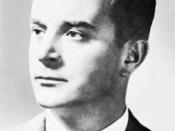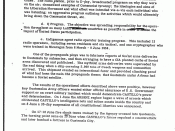The Berlin Crisis, the fall of China, and the Soviet acquisition of nuclear weapons in 1948 and 1949 had made leaders wary of Soviet encroachment in the Western Hemisphere. Analyzing Arevalo's term, Americans began to detect sins of Communism. Guatemala had long been a refuge for Communists in Latin America because of its openness. The number of homegrown Communists, however, appears to have been small, though some held high positions in the labor movement. Arevalo had been instructed to be on the lookout for Communist activity, a command he ignored. America didn't expect that kind of reaction from the Latin leader and took action accordingly.
During the Cold War, the United States found many countries as a threat to the changing government of Democracy. In 1947, President Truman signed the National Security Act. This enabled several Top Secret government agencies to form the CIA. One of the countries that posed a threat to the United States was Guatemala.
The CIA's job was to employ methods of paramilitary operations against any
government deemed a threat to U.S. interests. In 1950, the socialist leaning
Jacobo Arbenz was elected President of Central America in Guatemala. Since
Jacobo Arbenz was a socialist his views of government leaded towards Communism,
which was form of government the United States wanted to abolish. From the start, Eisenhower was on board for a CIA sponsored overthrow in Guatemala. More and more, he saw communism as a monolithic force that had to be combated with extralegal means.
The United States prepared to take over the Guatemalan Government by securing a condemnation of Guatemala's actions to form the tenth Inter- American Conference
in 1954. The CIA referred to this approach as "Open Skies". While putting together a small air force, the airplanes readied, a radio station set to broadcast on...


